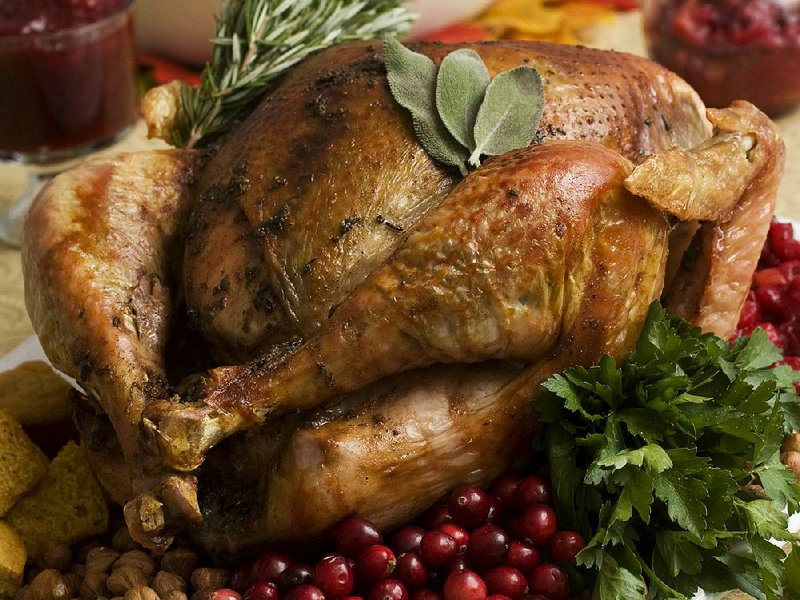The good stuff is coming. It's right around the corner at this truly wonderful time of the year.
But with all the good often comes bad -- but not bad in a "bad" way. Bad in the sense that it's hard for me, and many others, to keep our wits about ourselves when so many treats are right there for the taking.
But there are ways to enjoy celebrations without overdoing it.
The website of the American Diabetes Association (diabetes.org) has some sound advice for those who are facing holiday celebrations with diabetes. But the information is just as helpful for those with other food challenges.
First and foremost, they recommend planning. In doing so, we may be able to fend off some of the stress and enjoy the days while keeping our diabetes management on track. Also ...
• It's a good idea to consider the timing of the meal. Many families eat Thanksgiving dinner in the middle of the afternoon, so we need to plan for handling blood sugar changes if a large meal doesn't line up with our regular schedule.
Those who take insulin or a pill to lower blood glucose might need to have a snack at their normal meal time to prevent a low blood sugar reaction. If you have questions, check with your doctor.
• Being physically active after the meal is a way to compensate for eating a little more than usual. We can start a tradition that involves moving away from the food. We can take a walk (not to the couch), or play Frisbee, soccer or touch football with the family or neighborhood kids.
• We can also try healthier versions of our favorite dishes or treats. Substitute fat-free or light sour cream instead of regular. Steam green beans instead of sauteing them in butter. Or try new recipes like those found on diabetes.org.
• It might help to nibble on healthier foods while cooking or waiting to eat. And make sure snacks don't sabotage glucose levels before the meal.
A colorful platter of raw vegetables with a low-calorie dip or a few pieces of cheese would make for good snacking. A plate full of high-calorie or fried appetizers would not.
• When it is time to eat, be selective. A lot of traditional Thanksgiving foods are high in carbohydrates. We don't have to sample everything on the table, but if we want to eat these things, we should go with smaller portions. But overall, try to keep the total carbohydrate intake like a regular day.
• Try adding more vegetables to holiday menus. Nonstarchy vegetables are low in carbs and calories, and they'll help fill us up.
• The holidays are a time to slow down and catch up with friends and family. We need to focus on them instead of the food.
Eat slowly and enjoy the foods that many of us have only around this time of year. And try to resist going back for seconds.
• If you drink alcohol, remember to eat something beforehand to prevent low blood glucose levels later, and drink in moderation. Holiday beverages can add a significant amount of calories to what we take in from our food. Avoid drinks that are made with high-calorie mixers like regular soda, tonic, juice or margarita mix. Some brands offer sugar-free mixes.
This season is busy, and many people are out of school or off work. Use that time to be more active, and possibly try something sporty you've never done before. There are often holiday run/walks to participate in. Or get in extra walking while shopping for gifts.
But if you do overindulge, get back on track the next day. Just don't beat yourself up over it.
YUMMY
This time of celebrations is full of every manner of sweet treat. Decide ahead of time what and how much you will eat, and how to handle the social pressure from those who want you to eat and enjoy.
Share with someone else, or scrape off high-calorie toppings or extra frosting. Or volunteer to take a dessert that has fewer calories. And if you have a treat, compensate by not eating a lot of other carbohydrates.
There are also ways to revise many dessert recipes. Try a sugar substitute for part of the sugar. Or cut down on sugar and increase the other spices or flavorings.
Replace half the fat with applesauce or baby-food prunes when making brownies, cakes or cookies. Just remember that replacing fat with fruit ingredients increases the carbohydrate content.
And keep the portions small.
MORE GOOD IDEAS
Sheryl M. Ness, a registered nurse who writes for the Mayo Clinic website (mayoclinic.org), had some tips too:
• Use dark chocolate and walnuts in baked goods. They offer antioxidants and healthy oils.
• Snack on popcorn. It's a whole grain.
• Use wild rice, a whole grain, in soups, in stuffing or as a side.
• Serve sweet potatoes or winter squash, which are good sources of beta carotene.
• Bake pumpkin or cranberry bread.
• Make a dip out of smoked salmon. Just don't load it down with a lot of high-fat mayonnaise or sour cream.
• Consider making dips from legumes, such as black bean dip or hummus.
Hopefully we will all make it through the coming season without a lot of stress or angst. And remember, one of the best things to serve with that turkey or ham is a creamy delicious side dish of thankfulness.
Communicate with me at:
rboggs@arkansasonline.com
ActiveStyle on 11/17/2014
